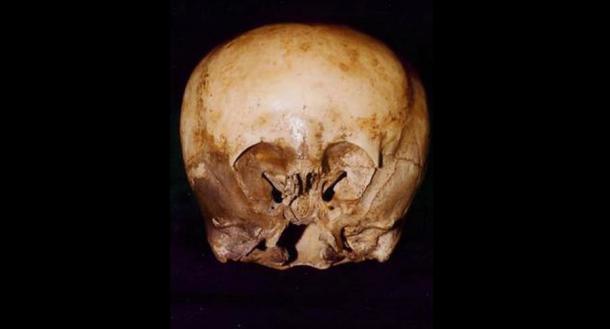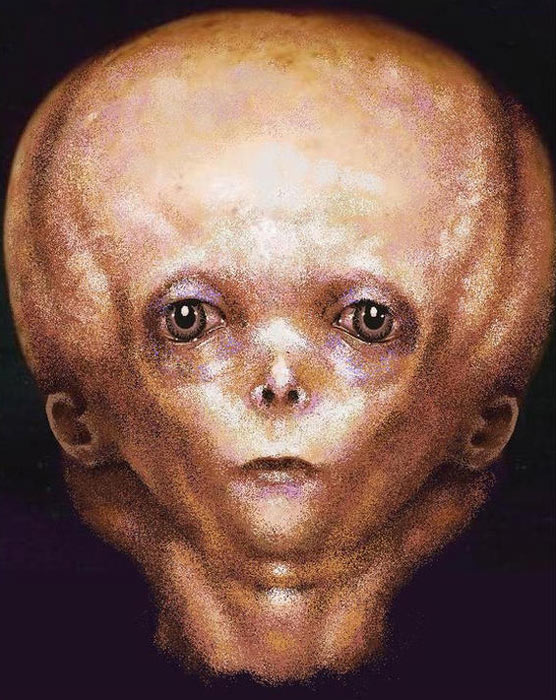It was back in the 1930s when an American teenager discovered an abandoned mine tunnel in Mexico’s Copper Canyon region.
Inside it she found a human skeleton and, clutching onto its arm, was the hand bone of another skeleton buried mostly under the earth.
It was described as being small and misshapen.
The teenager returned to the site the following day only to find that a flash flood had washed most of the bones away.
Nevertheless, the upper section of the skull of the buried skeleton, along with a small piece of the upper jaw bone remained.
The significance of the so-called Starchild Skull remained unrealized for nearly 70 years.
n 1999, the highly unusual skull, which has been dated at 900 years old, was handed to author and researcher Lloyd Pye to investigate after health professionals failed to identify a condition that could explain its appearance.
The skull became known as the Starchild Skull, and between 1999 and 2013 Lloyd enlisted the help of numerous experts and independent medical and scientific institutions across three countries (USA, Canada, and the United Kingdom) to conduct extensive research and testing.
Source
Inside it she found a human skeleton and, clutching onto its arm, was the hand bone of another skeleton buried mostly under the earth.
It was described as being small and misshapen.
The teenager returned to the site the following day only to find that a flash flood had washed most of the bones away.
Nevertheless, the upper section of the skull of the buried skeleton, along with a small piece of the upper jaw bone remained.
The significance of the so-called Starchild Skull remained unrealized for nearly 70 years.
n 1999, the highly unusual skull, which has been dated at 900 years old, was handed to author and researcher Lloyd Pye to investigate after health professionals failed to identify a condition that could explain its appearance.
The skull became known as the Starchild Skull, and between 1999 and 2013 Lloyd enlisted the help of numerous experts and independent medical and scientific institutions across three countries (USA, Canada, and the United Kingdom) to conduct extensive research and testing.
Source























